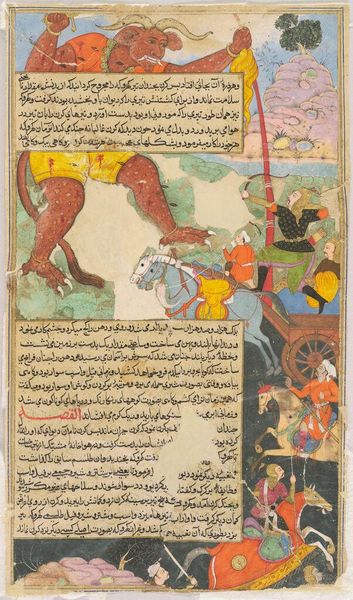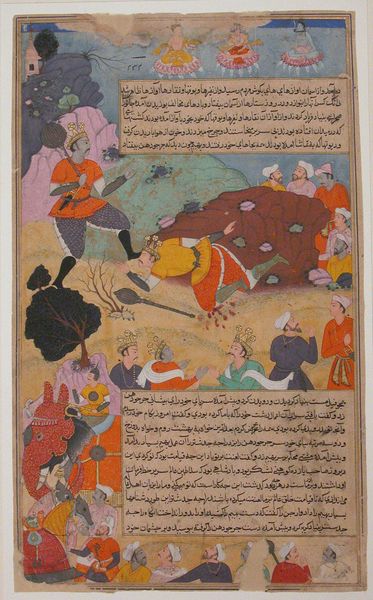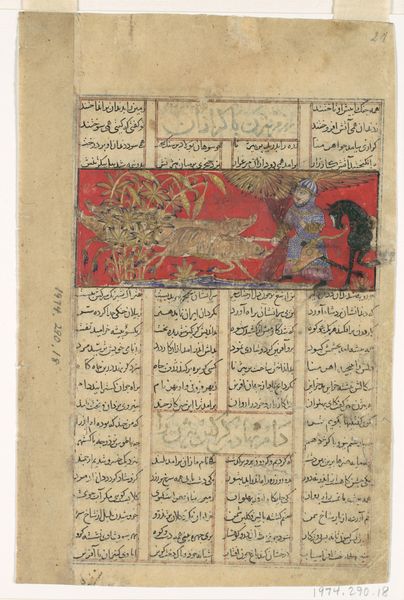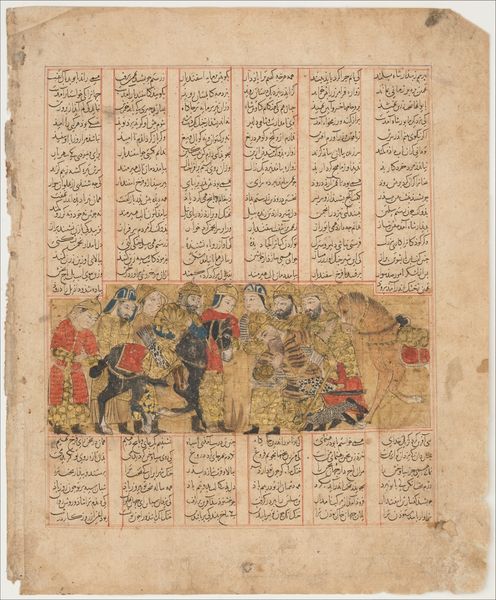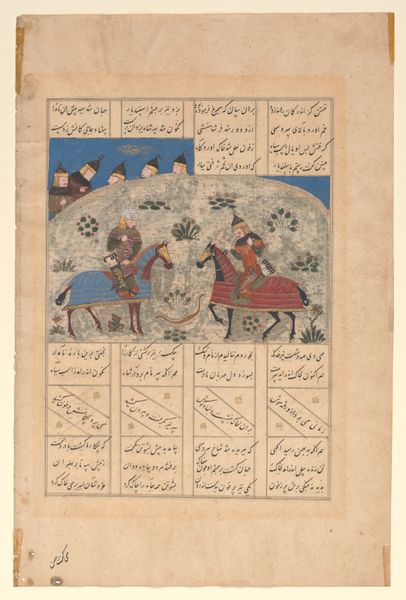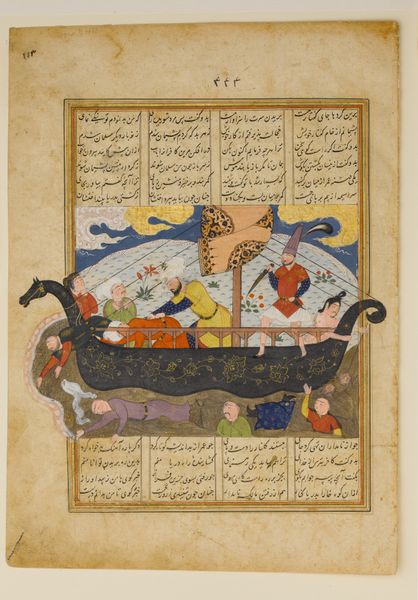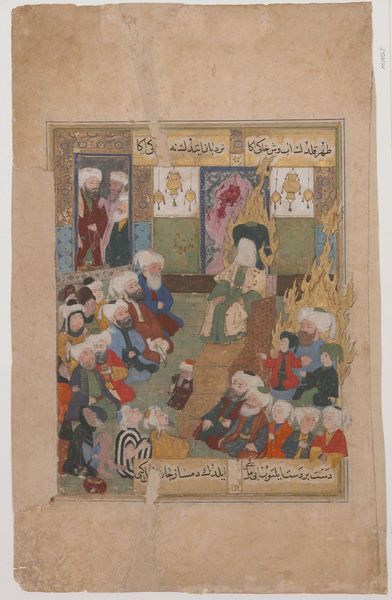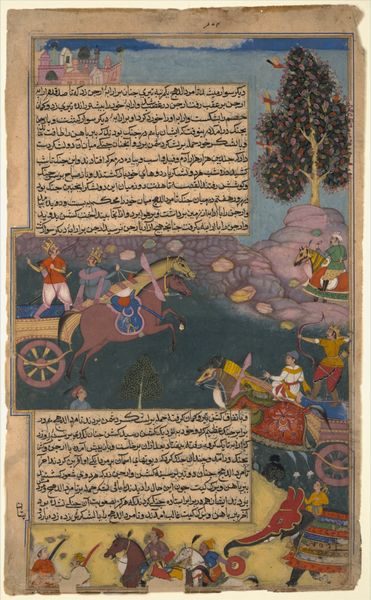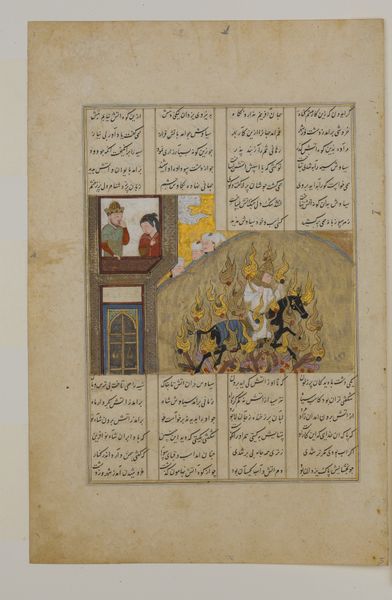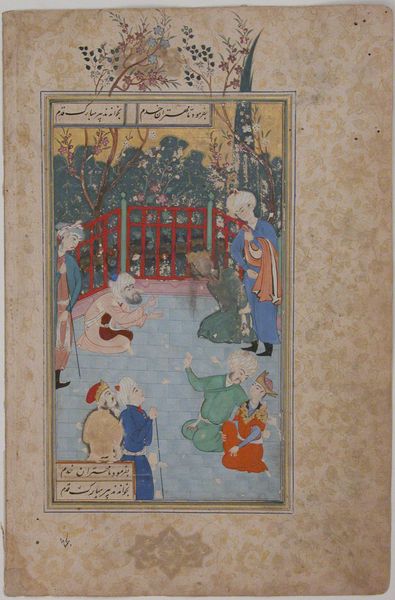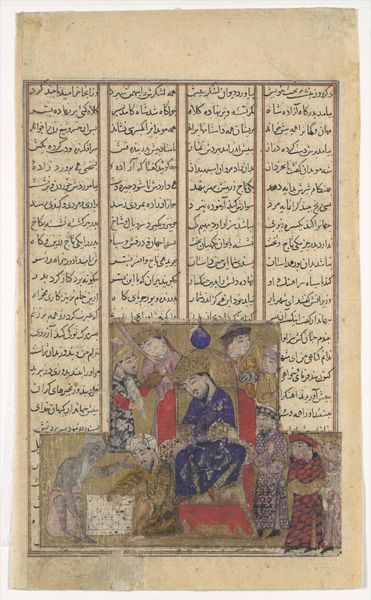
"Elias and Khizr at the Fountain of Life', Folio from a Shahnama (Book of Kings) of Firdausi 1475 - 1499
0:00
0:00
painting, watercolor
#
painting
#
landscape
#
figuration
#
watercolor
#
islamic-art
#
miniature
Dimensions: Overall: H. 9 in. (22.9 cm) W. 3 9/16 in. (9 cm) Painting: H. 6 1/8 in. (15.5 cm) W. 5 7/8 in. (14.9 cm)
Copyright: Public Domain
Curator: I'd like to introduce "Elias and Khizr at the Fountain of Life," a watercolor and ink miniature painting from a manuscript of the Shahnama, or Book of Kings, created between 1475 and 1499. It's currently held at the Metropolitan Museum of Art. What's your initial reaction to it? Editor: Stark. The darkness of the mountains contrasts intensely with those ethereal halos of flame, giving a real sense of drama and mystery. Curator: Indeed, the contrast is striking. These are depictions of the prophets Elias and Khizr. Let's consider the materiality of the work. What impact does watercolor on paper have for this kind of artwork? Editor: The paper base speaks to its origins as part of a manuscript, part of a culture deeply involved with calligraphy. The manuscript's functionality is inherent in this work’s materiality. How was the pigment mixed, how were these precise lines actually created, and how much skill was involved to not warp the page. I suspect incredible craftsmanship was necessary. Curator: Precisely. And the watercolor medium gives the landscape a degree of softness, it lacks the rigid feeling of the more common illuminated manuscripts which adds to this scene’s ethereal quality. Semiotically, the positioning of the figures, Elias on the left and Khizr on the right, suggests a balance, a mirroring that could represent the dual nature of prophecy and revelation within Islamic tradition. Editor: And look at how carefully each element is considered in this production. The composition leads your eye deliberately from the mounted figures down the dark incline towards those halos to meet those men surrounded by faint color, so much labor. I suppose I can appreciate both how the artisan's physical act of production and their skill really elevate the work. Curator: Absolutely. The luminous colors also underscore the spiritual significance. And look at how carefully crafted and precious the medium itself is—it speaks volumes about what’s most valued within that specific culture and historical moment. Editor: Considering the artist's labor, it’s almost a meditation on their role within that specific culture—in illuminating text. Curator: Fascinating points, both of you. I'm glad we've been able to spotlight its intrinsic value and delve a bit into its context and artistry. Editor: Agreed. There is such an incredible material consideration involved in this manuscript tradition that elevates both our understanding and the status of each miniature as something meaningful.
Comments
No comments
Be the first to comment and join the conversation on the ultimate creative platform.
